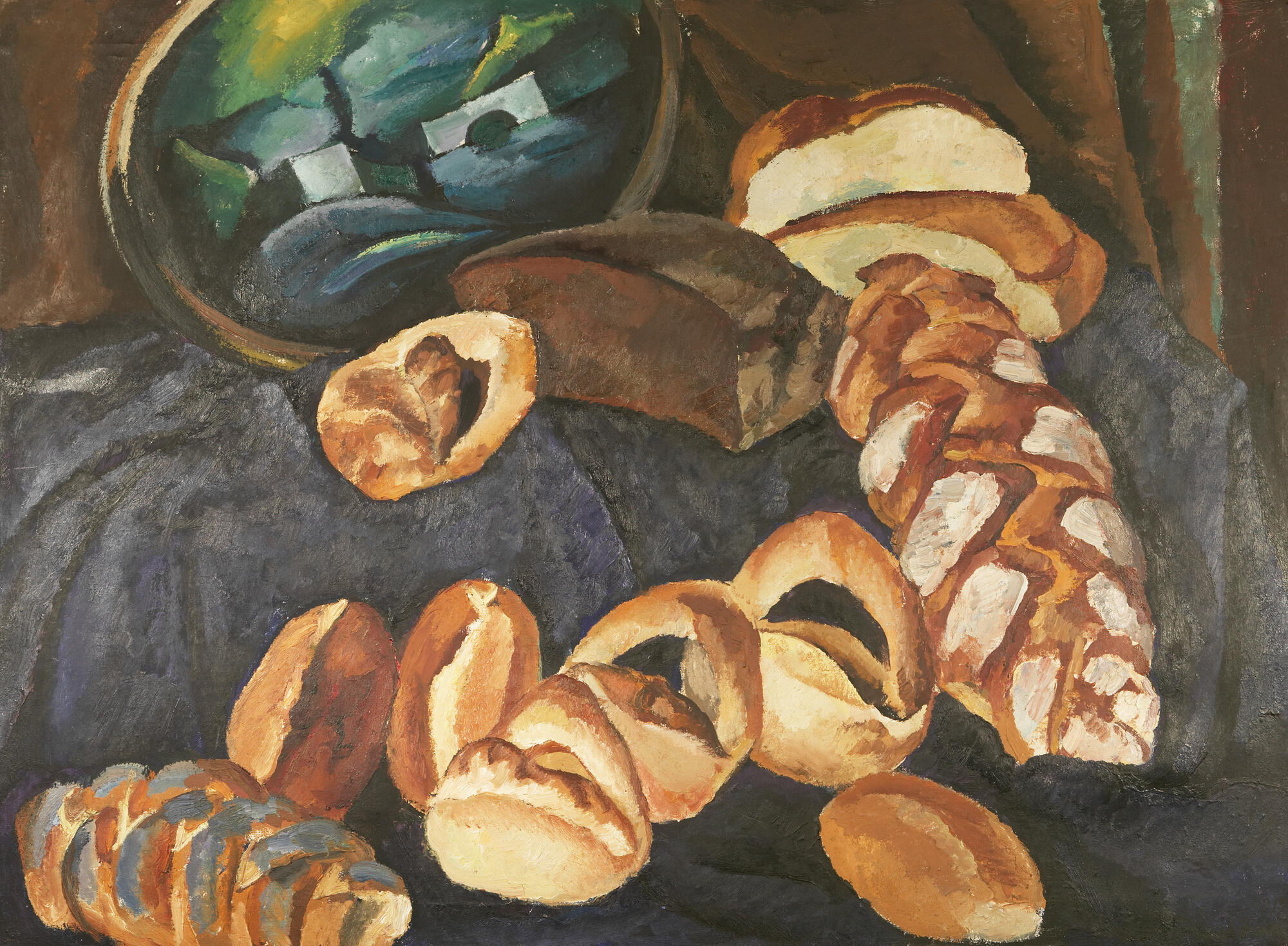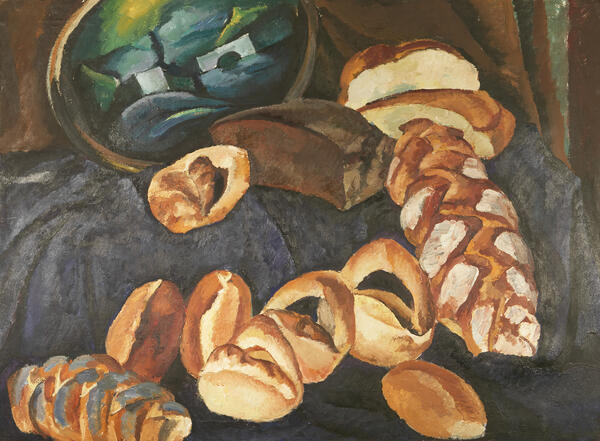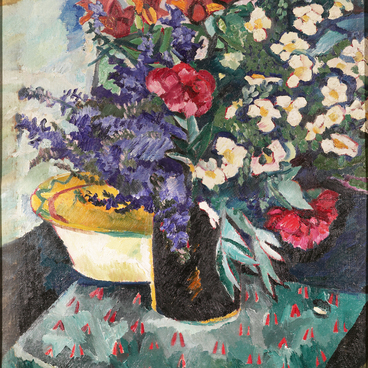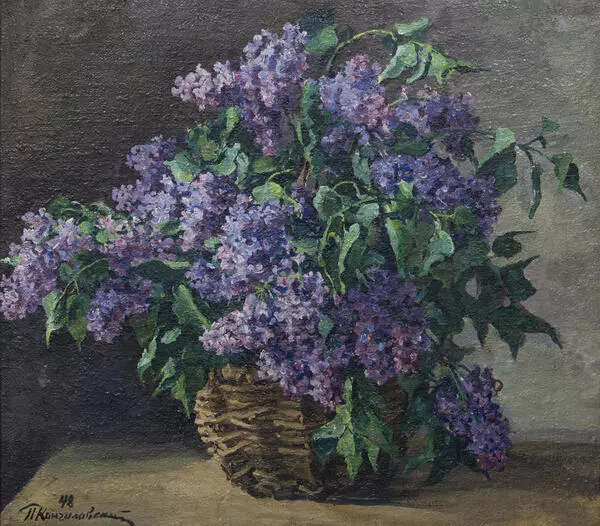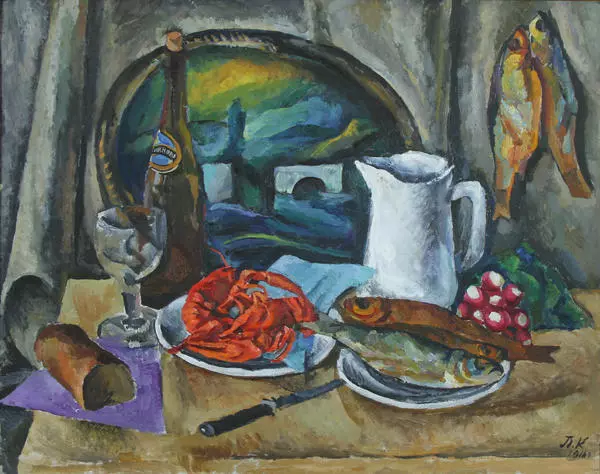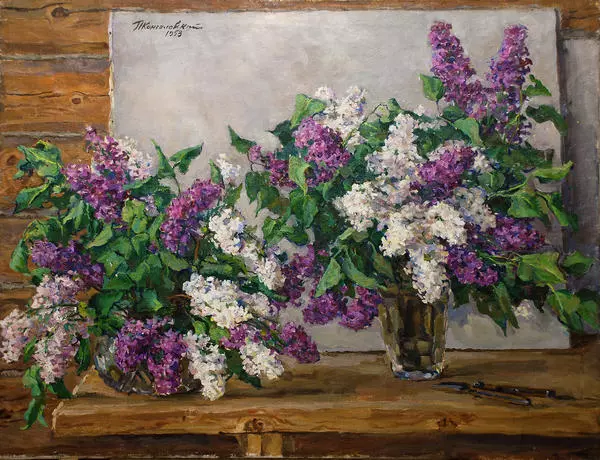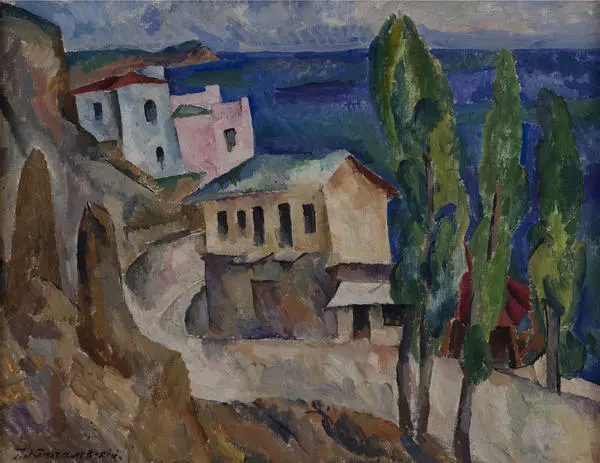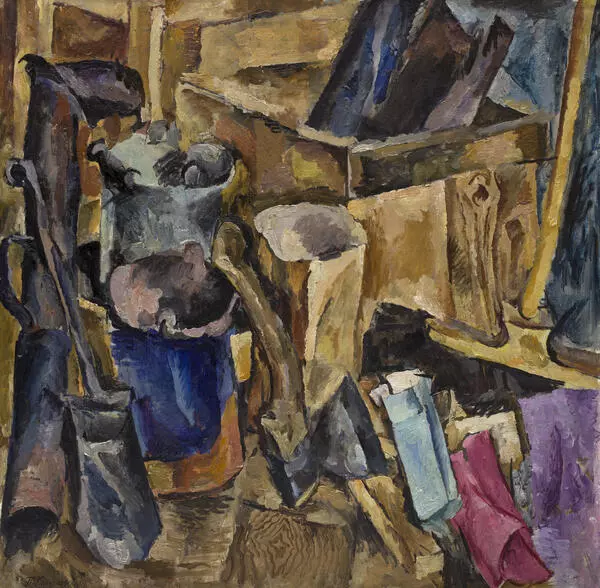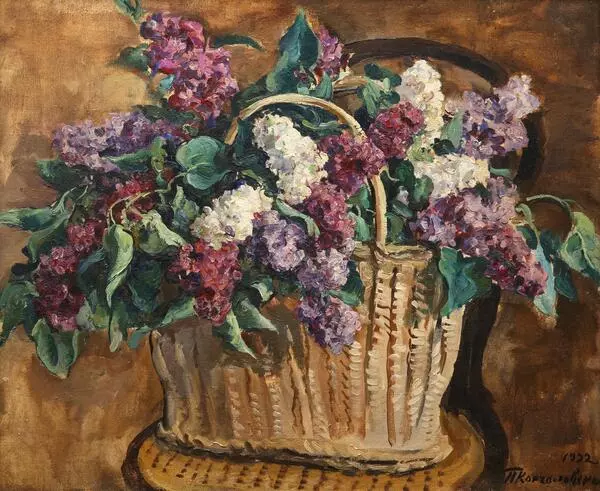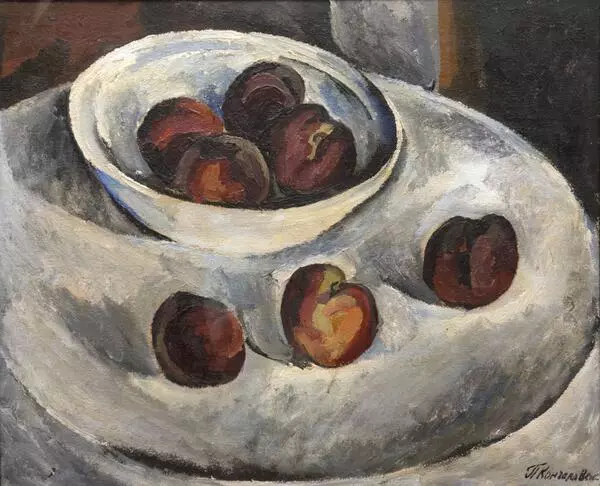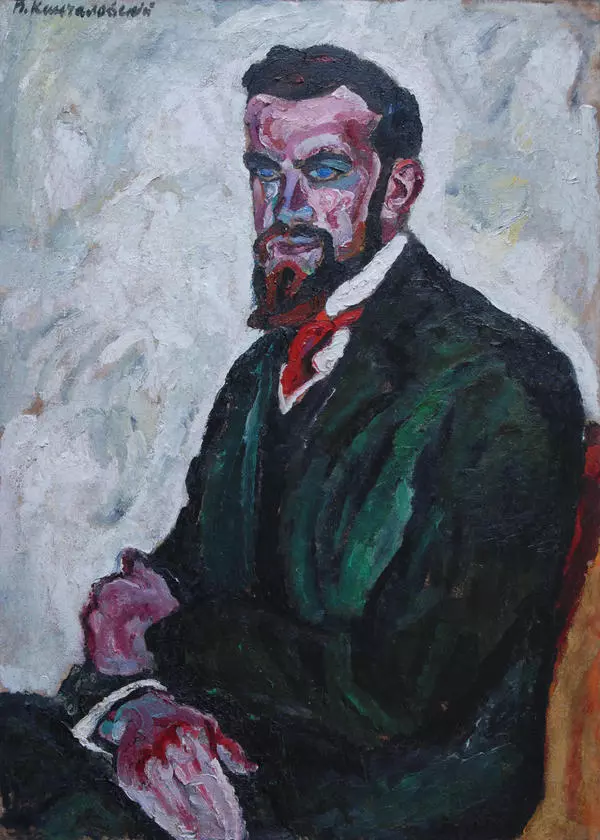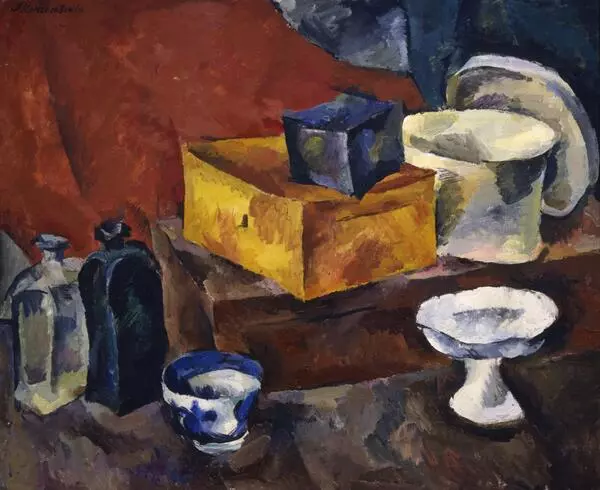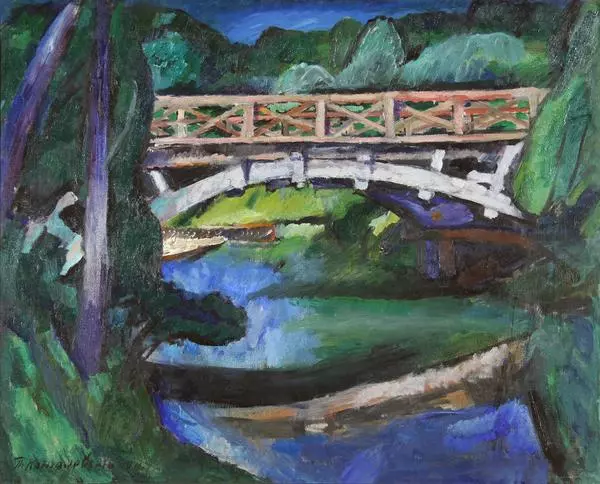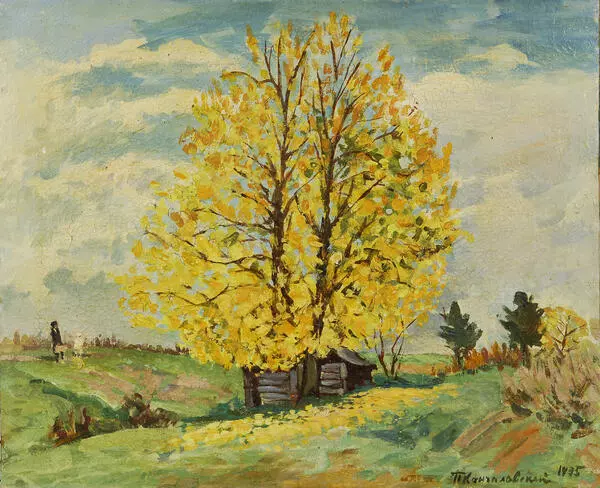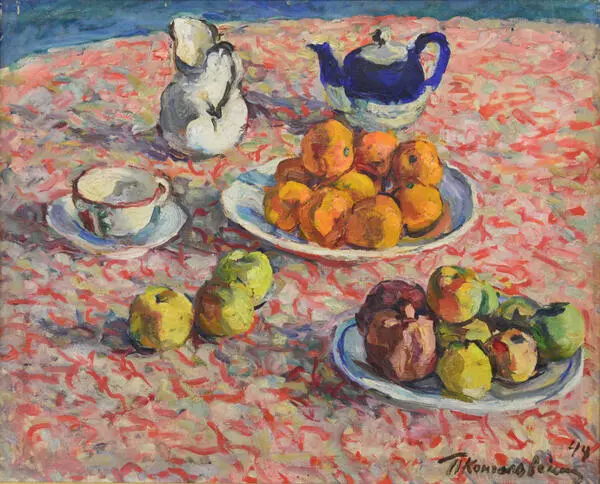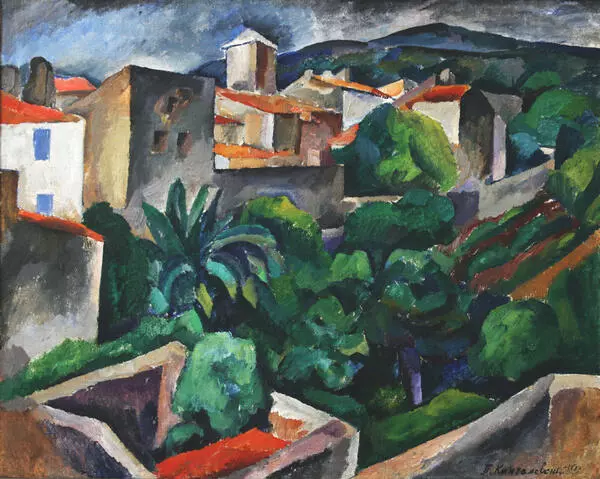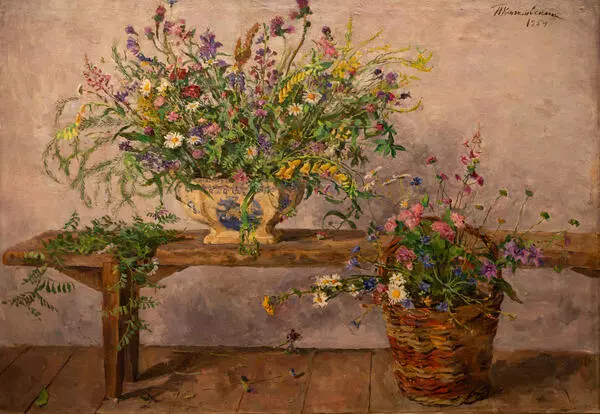Pyotr Konchalovsky (1876-1956) was Russian and Soviet painter, graphic artist, one of the brightest representatives of the ‘Jack of Diamonds’ association. He painted still lifes, portraits, landscapes, genre paintings, and is also known as a master of theatrical scenery. He studied at the drawing school of Raevskaya-Ivanova in Kharkov, in the evening classes of the Stroganov Central School of Technical Drawing in Moscow, and at the Académie Julian at the Imperial Art Academy in St. Petersburg. He lived in Moscow and taught at the private studio of Ilya Mashkov (1911-1917), II State Agricultural Academy in Moscow (1918-1921), VKHUTEIN (Higher Art and Technical Institute, professor in 1926-1929). He was honored with the title the Merited Artist (1922), Merited Artist of the RSFSR (1926), laureate of the Stalin Prize of the 1st degree (1942), People’s Artist of the RSFSR (1946), full member of the Academy of Arts of the USSR (1947).
The work “The Breads on Blue” was made in 1913 by Konchalovsky, and that same year it was shown at the exhibition of the art association “Jack of Diamonds”. The still life refers to the period of the artist’s passion for Cezanneism. Konchalovsky felt a strong attraction to Europe, spoke fluent French, and remained loyal to Cézanne throughout not only the 1910s, but in many respects also until the 1920s. He became famous for his still lifes.
In the era of social cataclysms, Cezanne’s techniques were perceived as a canon on which one could rely on. For Konchalovsky, “Jack of Diamonds” became a symbol of pictorial constancy and reliability, and still life - the genre that allowed preserving the traditional values and eternal themes of easel painting.
At the beginning of the twentieth century, a transformation of the still life genre took place. Creative experiments were made, and artists were in search of a new language to express their worldviews.
In Konchalovsky’s still lifes, creative intuition and constructive thinking of the artist merged. Skillfully using artistic techniques, the painter was able to express and convey the main idea of the painting: bread is the main and constant in life. Konchalovsky repeatedly addressed the topic of bread, each time solving it in a special way.
The work “The Breads on Blue” was made in 1913 by Konchalovsky, and that same year it was shown at the exhibition of the art association “Jack of Diamonds”. The still life refers to the period of the artist’s passion for Cezanneism. Konchalovsky felt a strong attraction to Europe, spoke fluent French, and remained loyal to Cézanne throughout not only the 1910s, but in many respects also until the 1920s. He became famous for his still lifes.
In the era of social cataclysms, Cezanne’s techniques were perceived as a canon on which one could rely on. For Konchalovsky, “Jack of Diamonds” became a symbol of pictorial constancy and reliability, and still life - the genre that allowed preserving the traditional values and eternal themes of easel painting.
At the beginning of the twentieth century, a transformation of the still life genre took place. Creative experiments were made, and artists were in search of a new language to express their worldviews.
In Konchalovsky’s still lifes, creative intuition and constructive thinking of the artist merged. Skillfully using artistic techniques, the painter was able to express and convey the main idea of the painting: bread is the main and constant in life. Konchalovsky repeatedly addressed the topic of bread, each time solving it in a special way.
